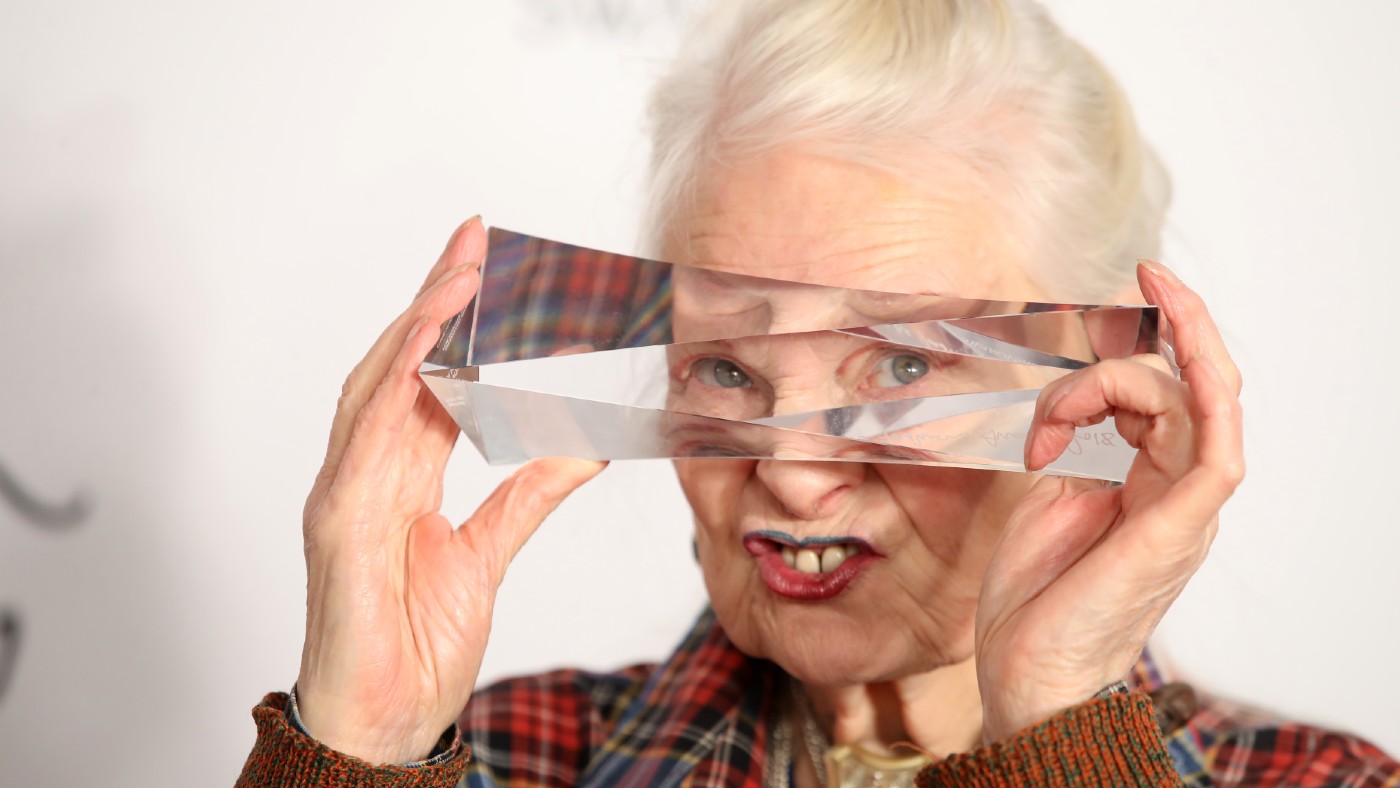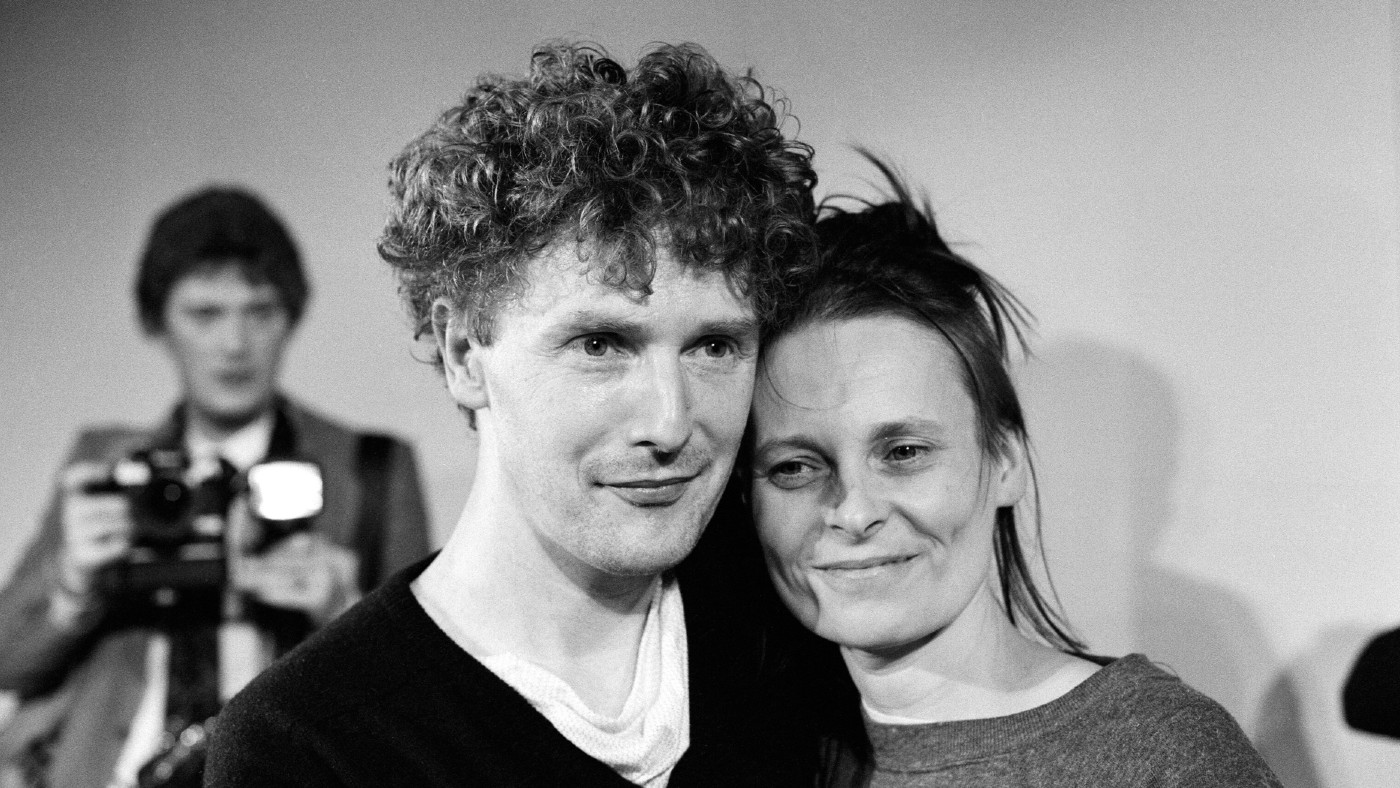Vivienne Westwood obituary: remembering the ‘high priestess of punk fashion’
The designer, who died aged 81, redefined fashion with her bold designs

A fashion designer, revolutionary and “emblem of English eccentricity”, Vivienne Westwood exploded onto the scene in the mid-1970s as “one of the chief progenitors of the punk aesthetic”, said The Times.
She was in her 30s when she and her art school drop-out boyfriend Malcolm McLaren started selling her bondage and fetish-inspired clothing from a shop at the far end of the King’s Road in London.
Originally called Let It Rock, and later renamed Sex, it was conceived as a salon as much as a store, and it soon became a meeting place for a group of rebels and recidivists who’d be at the forefront of the British punk movement.
The Week
Escape your echo chamber. Get the facts behind the news, plus analysis from multiple perspectives.

Sign up for The Week's Free Newsletters
From our morning news briefing to a weekly Good News Newsletter, get the best of The Week delivered directly to your inbox.
From our morning news briefing to a weekly Good News Newsletter, get the best of The Week delivered directly to your inbox.
Punk icon Jordan managed the store; Chrissie Hynde worked there as a sales assistant; and the Sex Pistols (the band McLaren managed) developed their look at Sex. The uniform Westwood created for them – torn T-shirts printed with lewd images and held together with safety pins, ragged mohair jumpers, tartan accents and bondage trousers – redefined fashion forever, and won her the nickname “the high priestess of punk fashion”.
But when the Sex Pistols unravelled, and punk started to merge with the mainstream, Westwood moved on, into haute couture. Finding her inspiration in art and history, she had her first catwalk show, Pirates, in 1981. Her bold designs (which incorporated Victorian crinolines, towering platform heels and corsets) were often described as “unwearable”, said The Daily Telegraph.

In 1993, Naomi Campbell famously fell over on the catwalk wearing her nine-inch platforms. Yet in a toned-down form, her dramatic, semi-satirical designs were widely adopted. She became one of Britain’s most influential designers, with outlets all over the world. (In China, she was referred to as the “dowager empress of the West”.)
National treasure
Westwood was embraced by the establishment that she had once kicked against; instantly recognisable with her dyed orange hair, she came to be regarded as a national treasure. Yet her spirit – “iconoclastic, subversive, individual” – never changed. In 1992, she turned up to collect her OBE from the Queen dressed in a tailored grey suit, but with no underwear (something that she revealed – inadvertently, she said – when she twirled for the cameras), and she continued to champion political causes.
A free daily email with the biggest news stories of the day – and the best features from TheWeek.com
She had started talking about sustainability in fashion in the 1980s; in 2015, she drove a tank to the house of the then-PM David Cameron in a protest against fracking; and in 2020, aged 79, she was suspended in a 10ft-tall bird cage outside the Old Bailey to protest against the imprisonment of WikiLeaks founder Julian Assange.
Early life
Vivienne Swire was born just outside Glossop, Derbyshire, in 1941. Her mother had worked in the woollen mills; her father in a factory. In her late teens, the family moved to Harrow, in north London, but she never lost her Derbyshire accent. She was already interested in fashion, but she wasn’t happy at Harrow School of Art, and left to train as a teacher.
In 1962, she married Derek Westwood, an apprentice at a Hoover factory (and later an airline pilot). They had a son, Ben, but she felt constrained by the marriage, and in 1965 she ended it. Soon after, she met McLaren, who was her brother’s flatmate. They started a relationship, and in 1967 had a son, Joe. McLaren was five years her junior, yet he became the first of the people she referred to as her “gurus”, said Jane Mulvagh in The Art Newspaper.
An autodidact, Westwood sought out “people from whom she could learn”. McLaren taught her about British street rebellion, French situationism, American pop culture. Her second guru, Gary Ness, a teacher from Canada, introduced her to the philosophy of Ancient Greece. Always in search of ideas, she researched her collections in art galleries and libraries; she gave her employees time off to visit exhibitions; and she campaigned for free access to museums. Her own favourite was The Wallace Collection in London.

She and McLaren opened their boutique in 1971. Initially, it sold 1950s memorabilia, brothel creepers and zoot suits to a generation that was rejecting the hippy movement. Later, their bought-in stock was supplemented by T-shirts that Westwood dyed, distressed and adorned with slogans or boiled chicken bones at their small flat in Clapham. As their ideas evolved, they changed the shop’s name and its decor.
As Sex, it had rubber curtains and its walls were covered in womb-like pink foam, chicken wire and graffitied slogans. In late 1976, as punk was reaching its apogee, the shop changed name again and became Seditionaries, because, Westwood said, it was political like punk, and she wanted to “seduce people into revolt”.

But by 1979, the year Sid Vicious died, punk was dead; it had been “a heroic attempt at confronting the establishment”, she said, “but ultimately it failed”. In 1980 the shop was renamed World’s End, and it was there that Westwood showcased her swaggering Pirates collection, designs from which were worn by members of Adam and the Ants and Duran Duran.
McLaren and Westwood split up soon after, said The Guardian. The 1980s were a lean decade financially, but in the 1990s, her Paris shows attracted Italian backers who realised that her designs – which dressed women “not as dreams or goddesses, but as heroes” – already had a following in Japan and was building another in China’s then very new market.
Global brand
Before long, Vivienne Westwood was a global brand. Meanwhile, she had found personal happiness with her Austrian husband and creative partner Andreas Kronthaler. They had met in the 1980s: she was teaching at the University of Applied Arts Vienna, and he was her best student. For one project, he had created a shirt by stitching schnitzels together with black satin.
In 2014, he told Deborah Ross in The Times that he did not notice the 25-year age gap, but that it had started to scare him. “She has incredible stamina,” he said. “When we ride the bike I get to the top of the hill and then I look beside me and she has come to the top of the hill. But I know one day this will change. That is what frightens me, and this is why I must treasure every moment with her. I love her.”
-
 All roads to Ukraine-Russia peace run through Donetsk
All roads to Ukraine-Russia peace run through DonetskIN THE SPOTLIGHT Volodymyr Zelenskyy is floating a major concession on one of the thorniest issues in the complex negotiations between Ukraine and Russia
-
 Why is Trump killing off clean energy?
Why is Trump killing off clean energy?Today's Big Question President halts offshore wind farm construction
-
 8 restaurants that are exactly what you need this winter
8 restaurants that are exactly what you need this winterThe Week Recommends Old standards and exciting newcomers alike
-
 Nine best TV shows of the year
Nine best TV shows of the yearThe Week Recommends From Adolescence to Amandaland
-
 Winter holidays in the snow and sun
Winter holidays in the snow and sunThe Week Recommends Escape the dark, cold days with the perfect getaway
-
 The best homes of the year
The best homes of the yearFeature Featuring a former helicopter engine repair workshop in Washington, D.C. and high-rise living in San Francisco
-
 Critics’ choice: The year’s top 10 movies
Critics’ choice: The year’s top 10 moviesFeature ‘One Battle After Another’ and ‘It Was Just an Accident’ stand out
-
 A luxury walking tour in Western Australia
A luxury walking tour in Western AustraliaThe Week Recommends Walk through an ‘ancient forest’ and listen to the ‘gentle hushing’ of the upper canopy
-
 Joanna Trollope: novelist who had a No. 1 bestseller with The Rector’s Wife
Joanna Trollope: novelist who had a No. 1 bestseller with The Rector’s WifeIn the Spotlight Trollope found fame with intelligent novels about the dramas and dilemmas of modern women
-
 Appetites now: 2025 in food trends
Appetites now: 2025 in food trendsFeature From dining alone to matcha mania to milk’s comeback
-
 Man vs Baby: Rowan Atkinson stars in an accidental adoption comedy
Man vs Baby: Rowan Atkinson stars in an accidental adoption comedyTalking Point Sequel to Man vs Bee is ‘nauseatingly schmaltzy’